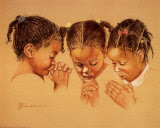Saturday, September 26, 2015
HENERAL LUNA, THE FILM
My friend, SG and I went to see Heneral Luna with both of us liking the film very much except -- for her, she didn't like the showcasing of divisions among the Filipino soldiers and in the movement for independence itself. As for myself, I didn't like the gore, the too bloody ending.
Actually, the film hews closely to the life of Heneral Antonio Luna who was the equivalent Chief of Staff then by General Emilio Aguinaldo. He was a common Ilustrado product of the 19th century of the Philippine Revolution who was educated in Europe and never forgot the need for the cutting off the Philippines from the umbilical cords of any foreign country -- Spanish and American. He was a musician, playing the guitar, a swordsman, a linguist, a writer, the quintessence of the Renaissance man at that time. Actually, Europe has the tendency to breed such people -- all-around personalities, not one-dimensional at all as is the tendency now for some people to aspire to be specialists.
Hence we see how Heneral Luna deals with her beloved, someone he sees when he has the time and prone to suffer from his speedy satisfaction without waiting for her to finish I suppose. We see him scold and be hard on those soldiers who do not abide by the rules of engagement -- not to have long hair, or not to obey when told to shoot at the enemy while being in the trenches. The film even recreates that funny but lugubrious scene when Heneral Luna brings a coffin to fetch General Mascardo who is attending a fiesta in Pampanga when there has been a need for him to be in a battle. Mascardo has earlier sent a message that Luna would need to bring a coffin should he force him to return to battle -- meaning to say, over his dead body. And so Luna does bring in the coffin thus forcing Mascardo to obey him.
Luna has many differences with Aguinaldo, not only in terms of making the soldiers obey him solidly. The latter has the tendency to coddle even those so-called revolutionaries who turned traitors when the Americans have come. Luna is very brave to call them as such and demand that they be arrested. Aguinaldo follows his idea but only has them kept out for a few days. Later on, they are brought out onto power again.
The way Luna fashions the soldiers is really remarkable. He emphasizes that they should have uniforms thus rendering a national dignity to the act of defending the country from invaders. Even the American generals who are penetrating Manila at the time take their hats off him, commenting that "he could have read the same military books that they had also."
More than the uniform, Luna emphasizes discipline among the ranks, even among the townspeople. When his soldiers are going to ride the train and the people -- children and adults ride it ahead of them, he tells them without mincing his words to "Get out!" swishing a nipa leaf to make them them. He is so at home with the people, even their quirks.
The film is done with a great understanding of the medium in mind, not like a book that renders a biography chronologically. Jerold Tarog made the film flow with beautiful Pilipino "(na)subukan mo bang (m)ahuli ang hangin?" "Dugo at pawis (ang bayad sa kalayaan)." Mga kapatid, may mas malaki tayong kaaway, ang ating sarili.(We have a bigger enemy than the Americans, ourselves.)"
This readily shows that our revolutionaries were intellectuals, highly percipient of social forces in operation as to why we could be easily conquered by invaders. Their quality is highly admirable which is probably why they won the battle against the Spaniards, the very first in Asia to wage and win victory against colonialism.
Another film technique that Tarog uses is his cut-to-cut of images between Luna and Aguiinaldo with their contrasting political views. That is a technique that is not possible in a book unless it were a cartoon.
Now this is my previous point why I have misgivings about the film, although it has many admirable points. I did not like the shots of Luna being massacred by the Caviteno soldiers. That scene has too many close-ups pandering to the violent and gory tastes of the audience, seemingly like Quentin Tarantino's movies. It takes the point of view of the killers not of Luna, which if the film has done so, should have shown how Luna's vision goes blurred minute by minute as his killers take a blow on the different parts of his body. Also, the film could have shown the scene in a long shot, emphasizing the bigger setting of contrasting viewpoints -- that of narrow-minded soldiers and the heavy sacrifices of the general to achieve liberation for the people and the country.
But then, the writer or the filmmaker of one's biography will have the last say because the subject is already dead, no longer able to resist or protest against the treatment of his ending.
Still I salute Tarog and the producers for having dived into the project though some powers-that-be in the international scene would squeak at the anti-colonial attacks of the film.
Subscribe to:
Post Comments (Atom)







No comments:
Post a Comment